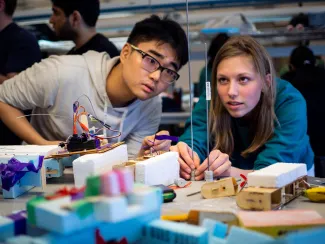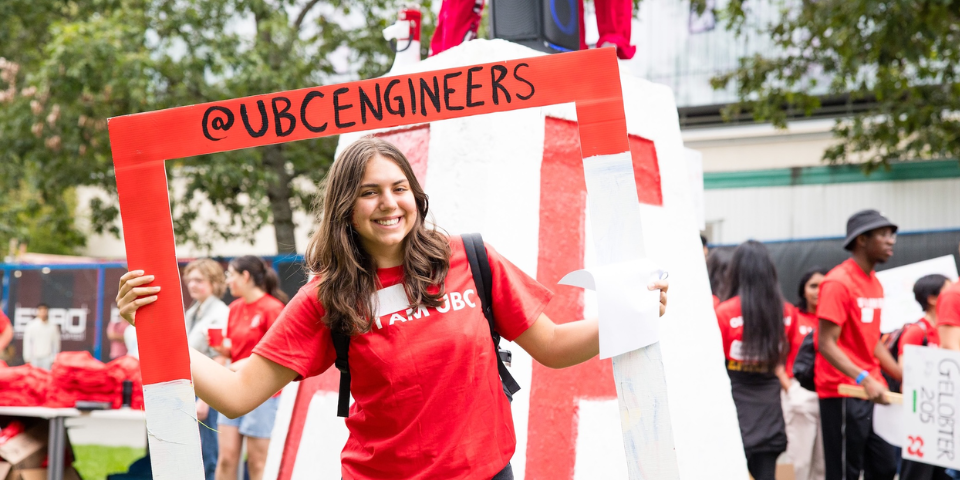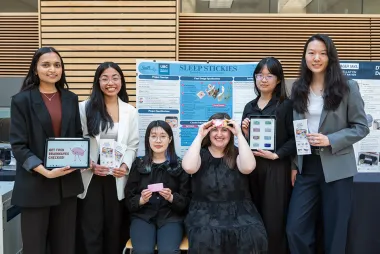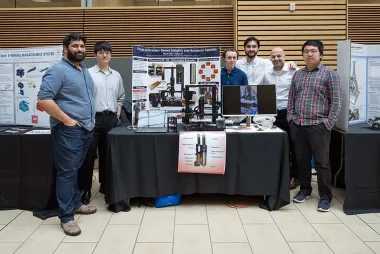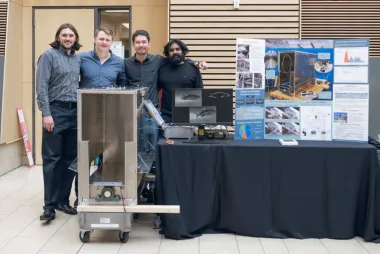Antony Chao, Kevin Johnston, Sean Bounger, Marc Vanderbanck, Felix Bolongaro
- Community Partner: Canadian Space Agency
- Degree:
- Bachelor of Applied Science
- Program:
- Campus: Vancouver
Our project
Over the past eight months, our team has been developing the chassis for a 3D-printed lunar rover for the Canadian Space Agency. The rover's mission is to explore potential lunar sites for further human exploration, as well as test the performance of 3D-printed composites in space. For that reason, the chassis has been designed to be made out of polyether ether ketone, also known as PEEK. Through our work, we optimized the design for weight, strength and thermal performance.
Our inspiration
We were inspired to take this project as all our capstone team are interested in the aerospace industry. Hence we were interested in reaching out to the CSA to see what capstone projects they had available for us to work on.
Our biggest challenge
The biggest challenge we faced in this project was comparing results from our simulations. We had many different simulations to account for structural loading and thermal performance, which we had to be sure passed all our requirements. It was challenging to ensure that they all passed without affecting other performance metrics.
What excited us most
Going into the project, the sheer scope of the project excited us. We were going to work with dozens of other capstone students across Canada to design a moon rover with guidance from the Canadian Space Agency.
The most interesting/surprising thing we learned
An interesting fact we learned during the project is that the surface of the lunar can go from 100C to -180C nearly instantly, as there is no atmosphere.
Our project's future
This project was a research and development project to determine the feasibility of using 3D-printed PEEK in lunar/space applications. As we have shown that this novel material and manufacturing technique can survive the harsh launch and space environments, the next step is to manufacture a model and perform physical testing to validate our design and simulations. After this, we hope to see our lunar river chassis on its way to the lunar surface to perform its scientific and exploratory roles in finding a new site for lunar human habitation.

